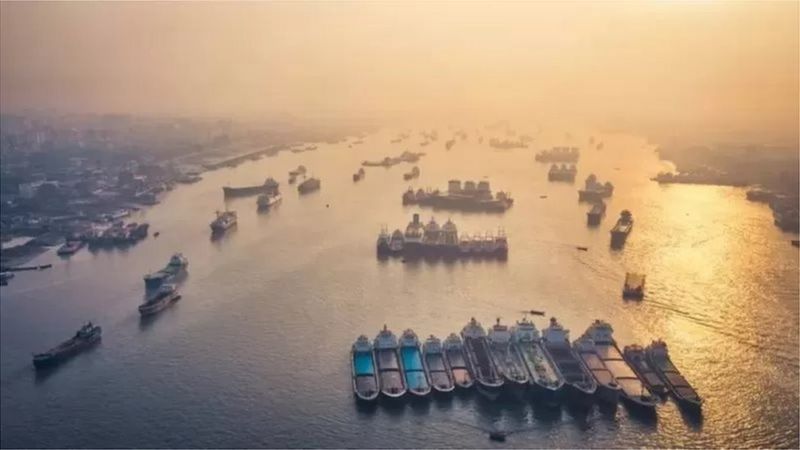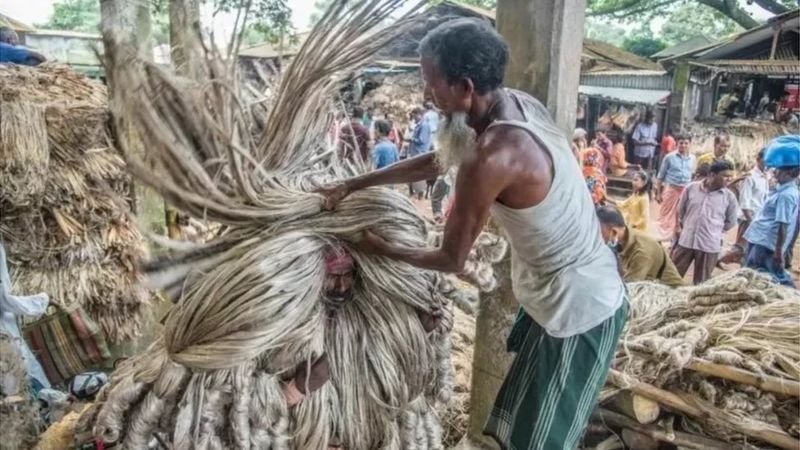Originally posted in BBC News on 13 January 2023
After decades, Bangladesh removed the ban on this item of Nepal, what is the role of India?

In an important decision, Bangladesh has allowed the import of yarn from Nepal through its Banglabandh Land Port. The Nepalese Embassy in Dhaka has confirmed this news by tweeting.
The Nepalese Embassy said in its tweet, “Banglabandha land port has been opened for yarn exporters of Nepal. The ban on export of Nepalese yarn through this port for two decades has now been lifted.”
Nepal’s Foreign Ministry issued a statement saying that they have full faith that this will prove to be an important step to promote trade between Nepal and Bangladesh.
In 2002, Bangladesh banned the import of Nepalese yarn through the Banglabandh land port. Bangladesh had taken such a decision to protect the interests of the yarn producers of its country.
Till now, Bangladesh used to allow Nepali yarn to be imported only through Benapole Land Port (Land Port) and Chittagong Port. Till now Nepali exporters used to send their goods through Chittagong port which increased their cost.
Nepal is a landlocked country and Bangalabandh is the closest port for its exporters to ship their goods out of the country. Nepal was demanding this from the Bangladesh government for many years. Bangladesh government has given this relief only for one year.
Nepal is a major exporter of polyester yarn and according to the Nepal Rastra Bank, Nepal has exported yarn worth 3.3 billion Nepali rupees in the first four months of the current financial year.
Nepal is a landlocked country

According to the bank, in the financial year 2021-22, Nepal has earned 9.51 billion Nepalese rupees from the export of yarn. Whereas in the year 2020-21, this earning was 7.34 billion Nepali rupees.
According to Golam Moazzam, research director and senior trade analyst at the Dhaka-based Center for Policy Dialogue (CPD), Bangladesh’s readymade garment sector is growing in trade and the government’s decision will help them boost their source of raw material imports. .
Talking to the BBC, Golam Moazzam said, “Bangladesh was mostly dependent on China for the import of raw materials for its garment sector, but now it can import raw materials from Nepal as well.”
Nepal’s government and exporters have welcomed this decision of Bangladesh.
Pashupati Dev Pandey, president of Nepal’s Garment Association, says that Bangladesh had given Benapole land to use port, but India did not allow Nepali exporters to use Petropole checkpost on its part.
Bangladesh has decided to open Banglabandh and India has decided to open Fulbari checkpost.
In conversation with BBC, he thanked both Bangladesh and India and said that this will further increase the trade of Nepal and Bangladesh.
Pashupati Dev Pandey also takes forward Golam Moazzam’s point and says that Bangladesh exported garments worth $31 billion last year and for that they need more and more raw materials. According to him, all the three countries Nepal, India and Bangladesh will benefit from this.
President of Nepal Textile Association, Shailendra Lal Pradhan also welcomed the decision and said that all the yarn being produced in Nepal needs a market and this decision of Bangladesh will greatly benefit Nepalese exporters.
He expressed confidence that India will also cooperate fully in this matter.
How is the trade between Nepal – Bangladesh

Nepal was the seventh country in the world to accept Bangladesh as an independent country. He also had very good relations with Pakistan, yet he accepted Bangladesh. Expressing displeasure, Pakistan had ended its relations with Nepal for a few days.
For the first time in the year 1976, Nepal and Bangladesh signed four agreements in the fields of trade, transit, civil aviation and technical cooperation.
In 1978, the two countries formed the Nepal-Bangladesh Joint Economic Cooperation at the Finance Minister level.
In 1997, Bangladesh inaugurated the Kakarbhita-Phulbari-Banglabandh transit route and allowed Nepal to use the Mongla port. But Nepalese exporters had to face many problems on the Indo-Nepal and Indo-Bangladesh border, due to which Nepal could not make much use of that port.
According to a report by the Institute of South Asian Studies, in the year 2019, Nepal exported US $ 12 million to Bangladesh, while Bangladesh exported US $ 48.6 million to Nepal.
According to the same report, in the year 2021, Nepal exported about US $ 6 million, while Bangladesh exported about US $ 13 million to Nepal.
Nepal and Bangladesh are the founding members of SAARC. Apart from this, both countries are also active in organizations like Bay of Bengal Initiative for Multi-Sectoral Technical Cooperation (BIMSTEC) and Bangladesh, Bhutan, India, Nepal Initiative (BBIN).
According to Golam Moazzam, trade is still very low despite very good relations between the two countries. According to him, the purchasing power of the people of Nepal is very less and the kind of raw materials needed by Bangladesh are also available with Nepal.
What is the role of India?

Nepal is surrounded by two powerful neighbors like China and India.
The distance between Nepal and Bangladesh is just 22 kms. The Siliguri Corridor in the Indian state of West Bengal connects southern Nepal and northern Bangladesh. This corridor is also called Chicken’s Neck.
But Nepal needs India to reach Bangladesh and due to this India’s role becomes very important.
Nepal depends on India to a great extent. Pushpit Dev Pandey says that Nepal imports 80 percent of its needs from India and sends 80 percent of its total exports to India.
Golam Moazzam says that India’s role increases a lot for a landlocked country like Nepal. According to him, if India opens its land for the exporters of Nepal, it will create other opportunities as well.
Nepal and Bangladesh are talking about cooperation in the field of energy. Hydropower in Nepal and gas in Bangladesh can be a big reason for cooperation between the two countries.
Nepal is spending crores of rupees in several hydroelectric projects under the five-year plan for 2019-24. Nepal currently produces 1250 MW of electricity and wants to increase it to 5000 MW.
Nepal can sell excess power to Bangladesh but for this it is necessary that India allows it to use its transmission gridline.
Sunil KC, founder chief executive of the Kathmandu-based Asian Institute of Diplomacy and International Affairs (AIDIA) and advisor to the Confederation of Nepalese Industries (CNI), says that both Nepal and Bangladesh had requested India’s NTPC to produce 50 MW of green energy. Please help to take the goods from Nepal to Bangladesh, but even after four months, India has not allowed it.
In a conversation with the BBC, Sunil KC says, “India should help both its neighbors to cooperate in the field of energy, which can prove to be a game changer for the BBIN Initiative.”
He says, “India and Nepal should now move beyond the relationship of roti-beti and establish a professional relationship between each other.”
India’s central role in regional cooperation

Golam Moazzam says that the countries of South Asia should learn from groups like ASEAN and the European Union.
According to him, ASEAN countries do 38 percent of their total trade with each other while European Union countries do 68 percent of their total trade with each other. While the countries of South Asia trade less than five percent of their total trade among themselves.
According to him, if trade is to be increased among the countries of South Asia, then India’s role is most central because in any group one country plays that role. Golam Moazzam says, “Germany plays an important role in the EU, Indonesia and Singapore play an important role in ASEAN. This is the prominence India enjoys in South Asia. India borders five countries.”
According to him, if India takes the lead in this and other countries cooperate with India, then trade will be promoted in this entire region and it will benefit everyone.
Sunil KC of Nepal also says that India should activate the BBIN Initiative as according to him most of the regional and sub-regional organizations are currently inactive.



